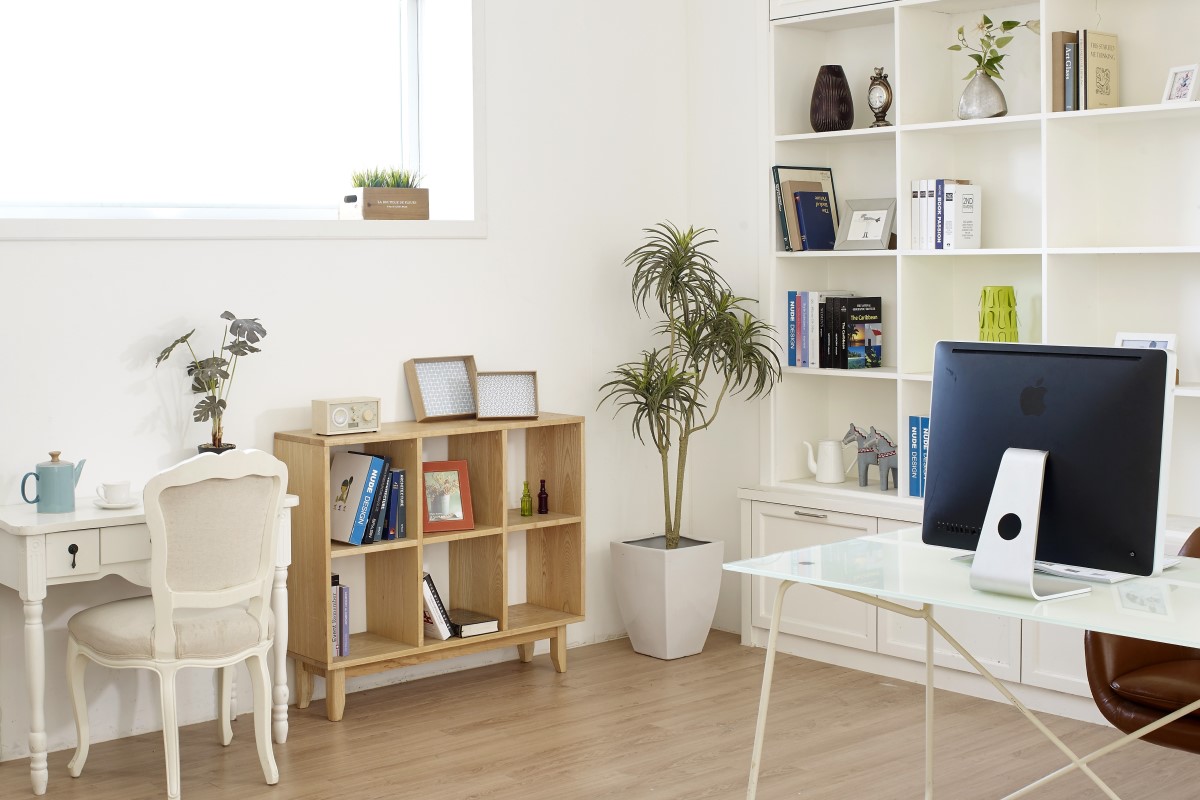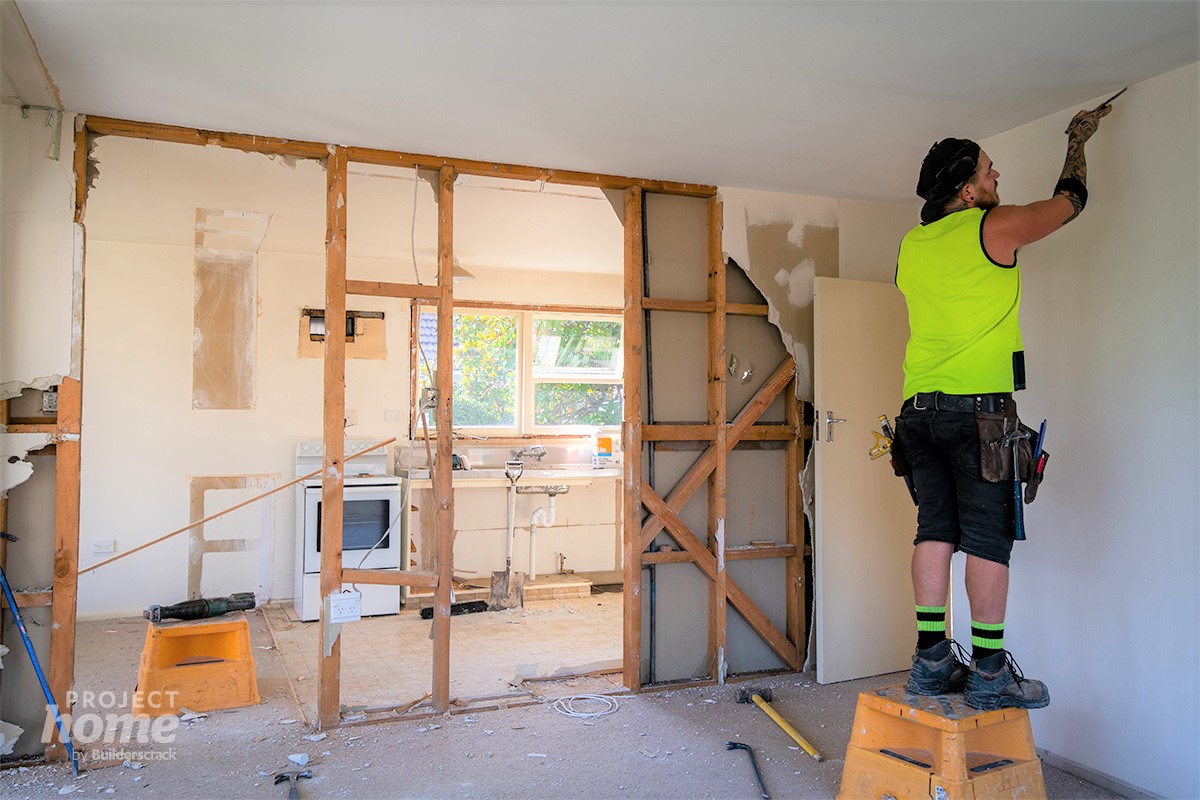Extending your house or adding another storey is a great way to reimagine your home so that it meets your evolving lifestyle needs.
Why not just find another home that suits the bill? Maybe you love your home’s location, it has strong sentimental value, or you’re simply not keen on selling (and moving!) anytime soon.
On the flip side, you may have bought it knowing full well it’d be perfect “if we just renovated the [insert space here]”.
Either way, if your dream home was just out of reach, or your lifestyle has changed since you moved in, these structural renovations will get you a step closer to what you have in mind.
Use this piece to get familiar with the possibilities and considerations for reimagining your home, then utilise the resources at the end to start your research.

A dedicated home office means no more WFH from the kitchen bench (or lounge!).
Reasons why you’d choose structural renovations
The reason ‘why’ you’re renovating can be the saving grace for maintaining a positive attitude throughout a sometimes long process. It’ll all be worth it, especially if you’re doing it for reason number 5!
Here’s some common reasons why Kiwis do structural renovations:
- To modernise a living space to incorporate indoor-outdoor flow (great for those wanting a smaller structural reno)
- To add an extra living room or bedroom (helpful for a growing family)
- To add a dedicated office space (handy for WFH and students)
- To move a bathroom or the kitchen (useful for older homes with dated floor plans)
- To add a self-contained dwelling (fantastic if you’ve got young adults or in-laws living with you).
What’s involved in structural renovations?
It’s impressive seeing how structural renos can take bones of a building and reutilise them as a base for something incredibly new. It stops short of a rebuild, however, they’re still substantial renovations.
So, what can you expect when doing structural renovations?
Reno: Living room extension out to patio
- Your builder will start with foundations, then move from the slab onto walls, trusses, the roof, then wrap it for weathertightness. Once it’s weathertight, they’ll start demoing the internal wall (slightly different for a conservatory). This type of reno can be carried out while living in the house.
Reno: Bedroom added off of living room
- Your builder will start with the subfloor, demo the exterior cladding, strip it back to frames, then build frames for the new room. Once it’s weathertight, they’ll frame out a door in the pre-existing living room wall. A hallway might need to be considered depending on the layout.
Reno: Sleep out or self-contained unit
- Your builder will approach this like a new build. Expect to discuss plumbing, running water and sewerage if you are going for a self-contained unit with a bathroom and toilet.
Reno: Additional storey
- Your builder, architect and/or structural engineer will address the foundation, roof and framing to assess the loading bearing capacity and go from there. In some instances, rather than changing the structural integrity of the lower level, it can be jacked up whilst a new lower storey is built with the requirements to house the existing structure as a second story.
How to choose between a house extension or storey addition
You’ve essentially got two options for how you’re going to add more space: build out (extension), or build up (storey addition).
For those that have larger backyards extensions are a fantastic option as they add to your living space without compromising too much valuable garden space.
As sections become smaller however, homeowners are finding they don’t have the space for additional ground floor house extensions. That’s where adding a second storey can become a better option.
Consider some of the pros and cons below.
Pros: Extensions
Cons: Extensions
Pros: Extra storey
Cons: Extra storey
5 things to consider to get a great result
1. Matching cladding materials
It’s important to blend the existing and new areas together seamlessly. Materials that are easier to match to older or existing cladding include weatherboard, cedar and plaster with paint. Materials that are harder to match are bricks, simply because you might have a hard time finding the same, or similar bricks (especially for the older housing stock).
2. A-team of tradespeople
It’s a good idea to start your plans with either a builder or architect. From there, and throughout the renovation, you’ll likely have these trades working on your home:
- Builder (can act as the project manager with as much responsibility as you feel comfortable with)
- Architect, engineer and/or designer (can assist with consents process)
- Electrician
- Plumber
- Drainlayer
- Painter
- Tiler
- Roofer.
To get started, post a job and choose either ‘Builder – Home Extensions’ or ‘Architects – Renovation Design’ from the listed categories.

You can get creative when matching cladding materials.
Considerations (cont.)
3. Insurance
Make sure you check your existing policy for exclusions, because generally speaking, most regular home insurance won’t cover your house for loss and accidental damage while any structural alterations are being made. In which case, you’ll need to look into ‘Contract works insurance’ before work begins. Cover can vary depending on the risk, size or detail of the planned alterations and it will give you peace of mind along the way.
For more information, see Consumer.
4. Consents and restricted works
As you’ll be carrying out consented works, this also means certain parts of the job will be restricted works. All restricted building work must be carried out or supervised by a Licensed Building Practitioner (LBP).
Before starting a project that involves restricted building work, you’ll need to engage an LBP designer to carry out or supervise the restricted building work aspects of your design. The LBP designer will provide you with a Certificate of Design Work which you will need to apply for a building consent. Reputable architects, builders and project managers on Builderscrack will be able to help you with this process.
For more information, see Building Performance.
5. Temporarily moving out
It’s always a good idea to think about this early on: if required, could you vacate your home and stay with a family member or friend during your renovation? If that option isn’t available to you, consider adding the cost of temporary accommodation to your budget to see if it’s viable.

Reimagining your home is a great way to adapt your house to your current lifestyle – aka – lazy Sunday brunches at home.
Key takeaways
These are the key takeaways you need to know when reimagining your home with structural renovations.
There you have it – a quick insight for how to take the home you’ve got, and turn it into your ideal home. There’s no denying how much work is involved in structural renovations, but having a home feels good to live in (and valuable to own) will be worth it for years to come.

